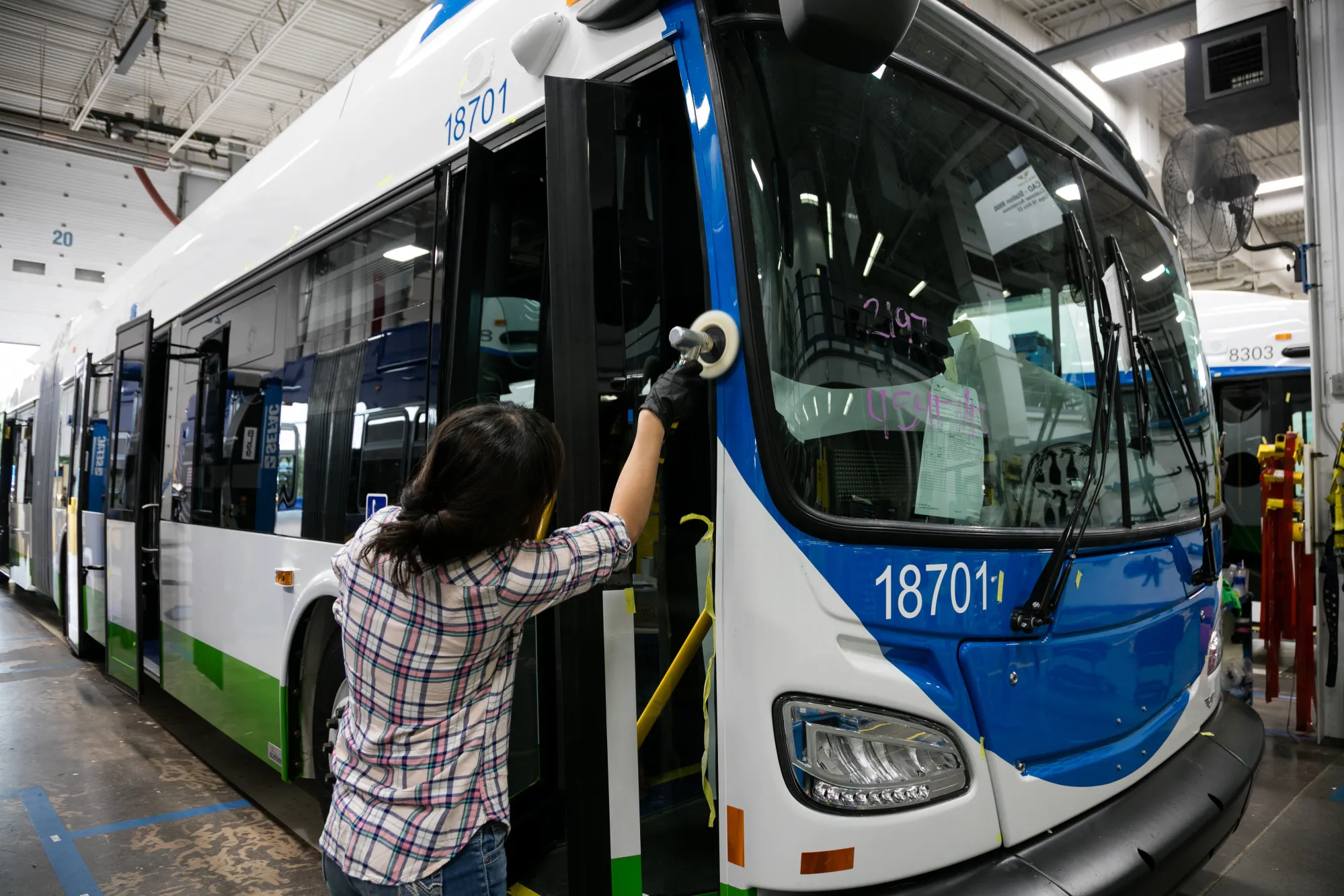How to Use Public Transportation to Save Money on Your Travel Budget

Discovering the Savings of Public Transportation
Traveling can be an exhilarating experience, but the costs associated with it can escalate quickly. One of the most effective ways to stretch your travel budget is by utilizing public transportation. Not only does it help you save money, but it also offers a unique perspective on the local culture, providing an authentic experience that renting a car or using rideshare services might not. By immersing yourself in the daily routines of residents, you can gain deeper insights into the city’s essence.
There are several compelling reasons to consider public transit during your travels:
- Affordable Fares: Major cities often provide discounted rates for buses and trains. For example, New York’s Metropolitan Transportation Authority (MTA) offers a weekly unlimited MetroCard that can save frequent riders up to 50% compared to single-ride tickets.
- No Parking Fees: With the challenges of finding parking in crowded urban centers, public transportation allows you to completely bypass parking expenses. In cities like San Francisco, where parking costs can soar to $6 per hour, taking public transit can be a significant financial relief.
- Environmentally Friendly: Opting for public transport reduces your carbon footprint, contributing to a greener planet. The American Public Transportation Association reports that public transit saves the equivalent of about 45 million metric tons of carbon dioxide annually.
In the United States, many urban areas have developed extensive public transportation systems, making it easier than ever to navigate without breaking the bank. Here are examples of how various systems can enhance your travel experience:
- Subway Systems: Cities like New York and Chicago boast robust rail systems that can take you almost anywhere. The New York subway has about 472 stations, making it one of the largest in the world and a gateway to countless attractions.
- Bus Services: Most cities operate reliable bus routes that connect key attractions. For instance, Los Angeles has introduced the Metro Rapid system, featuring limited-stop services that reduce commute times across the city.
- Rideshare and Bike Sharing: Supplementing public transport with rideshare apps or bike-sharing services can provide flexibility and ease. Many cities have implemented bike-share programs, like Capital Bikeshare in Washington D.C., where you can rent bikes for short trips, seamlessly integrating with public transit.
By embracing public transportation, you can look forward to saving money while discovering authentic experiences. Each ride becomes an opportunity to meet locals, learn about the area’s history, and embrace the day-to-day life of its residents. Get ready to explore how you can maximize your travel funds and enjoy your journey like a local, making memories that go beyond the typical tourist experience.
DISCOVER MORE: Click here to learn how to plan eco-friendly itineraries</p

Maximizing Your Savings with Public Transportation
Using public transportation while traveling can significantly cut down on costs, but understanding how to navigate the system effectively can amplify your savings. With just a bit of planning and awareness, you can make your public transit experience seamless and cost-effective. Here are some essential tips to help you get the most out of your public transportation use during your travels:
- Research Route Maps and Schedules: Before arriving at your destination, take time to study the city’s transit maps and schedules. Many transit authorities offer user-friendly websites and mobile apps that provide real-time updates, route planners, and fare information. Knowing the best routes in advance can save you valuable time and money.
- Consider Multi-Day Passes: If you plan to use public transportation frequently, look into purchasing multi-day passes or cards. For instance, cities like Boston offer a Charlie Card that provides unlimited rides for seven days, at just a fraction of the cost of individual fares. This can lead to significant savings, especially for sightseers eager to explore.
- Stay Off Peak Hours: While most public transportation systems operate throughout the day, traveling during peak hours can have many disadvantages, including overcrowded vehicles and potential delays. Additionally, some cities implement lower fares during off-peak hours, making it an ideal time to travel if you’re looking to save.
- Check for Discounts: Many public transit systems offer discounts for students, seniors, and children. Always inquire about special fare programs when purchasing tickets or passes. For example, the Washington D.C. Metro system provides discounted fares for seniors and individuals with disabilities.
- Utilize Transfers: By planning your journey wisely, you may be able to minimize costs through transfer policies. Many transit systems allow you to transfer between buses and trains without additional charges if done within a specified timeframe. Familiarize yourself with these policies to maximize savings.
Traveling under budget doesn’t mean you have to skimp on experiences. Utilizing public transportation opens doors to new neighborhoods, local markets, and hidden gems that tourists may miss when opting for more conventional travel methods. Picture yourself hopping on a trolley in San Francisco or riding the Monorail in Seattle, each trip unfolding the character of the city.
Additionally, public transit allows you to avoid unforeseen expenses associated with car rentals, such as insurance costs and fuel prices. Furthermore, this mode of transport alleviates the stress of driving in unfamiliar areas, allowing you more time to focus on enjoying your travels rather than navigating traffic.
Public transportation isn’t merely a means to save money; it’s a passport to adventure. By embracing the local transit systems in your travel destinations, you’re positioning yourself to explore further while spending less. In the following sections, we’ll dive deeper into the specific benefits, practical tips, and resources to help you maximize your public transit experience, ensuring you stretch every dollar on your journey.
When planning a trip, utilizing public transportation is an excellent strategy not just for saving money but also for enhancing your overall travel experience. Not only does it lower your expenses, but it also allows you to immerse yourself in the local culture. Here are several key advantages to consider:
| Advantages | Description |
|---|---|
| Cost-Effective | Public transportation often offers significantly lower fares than taxis or rental cars, allowing you more financial flexibility to explore. |
| Sustainable Travel | Using buses or trains reduces your carbon footprint, contributing to eco-friendly travel that many destinations are encouraging. |
| Local Experience | Riding local buses or metros allows you to engage with residents, discovering hidden gems and gaining insights into local life. |
| Convenience | Many cities have integrated systems, including mobile apps for schedules and routes, making navigating easy even for newcomers. |
By incorporating public transportation into your travel plans, you not only enhance your adventure but also keep your budget in check, proving that exploring new places doesn’t have to drain your finances.
DISCOVER MORE: Click here to learn about the importance of local cuisine in culinary tourism</
Choosing the Right Transportation Options
While public transportation in cities can deliver remarkable savings, selecting the right mode can further enhance your travel budget efficiency. Various options—from buses and subways to trams and ferries—each have their unique advantages that can fit perfectly within your travel itinerary. Understanding these differences can help you prioritize your time and expenses on your journey.
- Buses: A Versatile Choice – City buses often cover extensive routes that can connect you to neighborhoods and attractions beyond the typical tourist trail. In cities like New York and San Francisco, bus routes are plentiful and regularly serviced, offering a budget-friendly means to reach destinations while enjoying the local scenery. Furthermore, buses usually feature a flat fare rate, meaning you can travel extensively without worrying about accumulating costs with each ride.
- Subways: The Speed and Efficiency – In densely populated metropolitan areas, subways are the fastest way to get around. Cities like Chicago and Los Angeles have investing in extensive subway systems designed to streamline travel for both residents and visitors. By utilizing the subway, travelers can avoid traffic congestion and save both time and money. It’s also worth noting that a single fare often covers travel across multiple stations, making it a highly economical option for those looking to explore the city quickly.
- Light Rail and Trams: Unique City Experiences – Light rail systems and trams offer an enjoyable way to traverse city landscapes while providing a scenic view of urban architecture. Cities such as Portland and Seattle pride themselves on their light rail services, which not only help you save money but also emphasize sustainable travel practices. Often, these systems provide easy transfers to bus services or subways, making it simple to navigate through the city seamlessly.
- Ferries: A Charming Alternative – In coastal cities and those with sizable waterways, ferries can be an efficient mode of transport and a delightful experience. For instance, visiting San Francisco would be incomplete without a round trip on the ferry to Alcatraz. Moreover, certain ferry services might offer consolidated fare options, allowing unlimited services throughout the day, optimizing usage for tourists keen on adventures across the water.
In addition to these choices, be mindful of the accessibility features provided by different transportation modes. Most major cities have worked diligently to improve services for travelers with disabilities, which may include elevators in subway stations or ramps on buses.
Equipping yourself with local transportation passes that allow unlimited travel across various services can be a definitive cost-benefit strategy. For example, the *Clipper Card* in the San Francisco Bay Area not only covers the BART (Bay Area Rapid Transit) but also buses, ferries, and even some cable cars. A single card simplifies travel and prevents the hassle of purchasing multiple tickets.
Moreover, embracing public transportation can enrich your travel experience. By interacting with locals during your commute, you may uncover hidden gems, local dining spots, and bustling markets that you would otherwise miss in a rental car. Each ride can reveal unique stories and perspectives from residents, giving you a deeper connection to the city you’re exploring.
As you weigh your travel options, keep in mind that different cities have unique public transport offerings. It is crucial to research beforehand to determine which option aligns best with your travel style and budget. With an open mind and a little planning, public transportation can be your ticket to unforgettable experiences while keeping your expenses in check.
DON’T MISS OUT: Click here to discover delightful culinary adventures
Final Thoughts on Smart Travel Choices
In conclusion, leveraging public transportation is a strategic way to optimize your travel budget while immersing yourself in the local culture. By selecting the right transportation options—be it buses, subways, light rails, or ferries—you not only save money but also enhance your travel experience. Each mode offers distinct advantages, allowing travelers to discover hidden gems and local spots that may often go unnoticed when relying solely on rental cars or rideshares.
Additionally, investing in local transit passes can save a considerable amount and simplify your travel logistics. These passes frequently provide unlimited travel options, giving you the flexibility to explore at your own pace without the fear of spiraling costs. Not to mention, navigating a city like a local opens the door to unique interactions and unforgettable stories from residents, giving you a richer, more authentic travel experience.
As travel enthusiasts look to make the most of their budgets, public transportation shines as a practical alternative. It supports sustainable travel, reduces financial strain, and enhances the overall journey. Whether you’re in the bustling streets of New York or the scenic routes of Seattle, diving into the world of public transit enables you to connect deeply with your surroundings and cherish the adventures that await. So the next time you plan your travels, consider hopping aboard public transportation—it may turn out to be the best decision for both your wallet and your memories.


